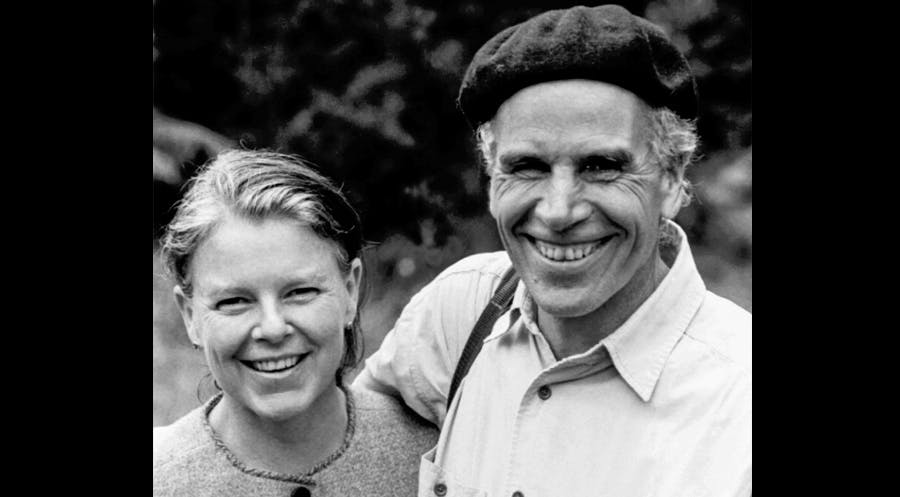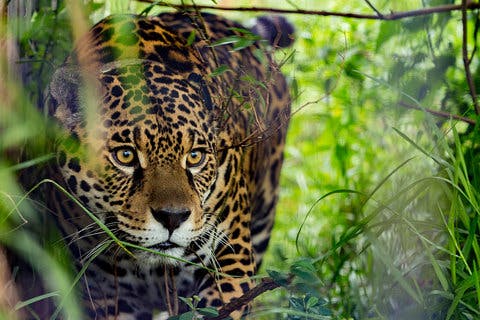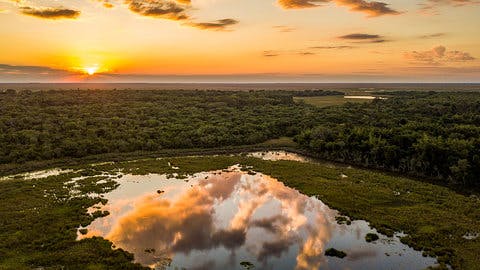Tompkins Conservation places archive at the Stanford University Libraries in support of ongoing field studies and research in Chile and Argentina

Tompkins Conservation was envisioned by the late Doug Tompkins, founder of The North Face and Esprit, and Kris Tompkins, former CEO of Patagonia, Inc.
Tompkins Conservation and its co-founders and benefactors, Kristine McDivitt Tompkins and the late Douglas R. Tompkins, are donating their personal archives as well as the archive of their conservation and rewilding work in South America to the Stanford University Libraries. These historical, legal, and scientific records will directly benefit the faculty and students who are continuing Stanford’s longstanding tradition of conducting field studies and research in Chile and Argentina, as well as those interested in land conservation initiatives.

Driven to confront the global crises of climate change and biodiversity loss, Tompkins Conservation and its independent nonprofit offspring organizations, Rewilding Argentina and Rewilding Chile, have spent over three decades protecting and rewilding big, wild, and connected landscapes so that human communities, animals and plants can thrive. Collaborating with public and private partners, Tompkins Conservation drove the creation or expansion of fifteen national parks, including two marine national parks, protecting 14.8 million acres of land and 30 million acres of ocean in Argentina and Chile as intact ecosystems. The story is told in Wild Life, released in 2023 by National Geographic Documentary Films.
“This film – inspiring, sad, and magnificent as it is – provides contemporary context for the academic community as we prepare to open the Tompkins Conservation archive for research,” said Michael A. Keller, the Ida M. Green University Librarian and Vice Provost. “I anticipate that there will be active engagement at Stanford with these organizations and their missions for a very long time, and I hope that there will be opportunities for students at all levels to engage in their projects from campus or on-site. We are especially grateful to Kris Tompkins for the placement of the archive at Stanford where well-intentioned scholars and eco-environmentalists will make excellent use of it.”
“Though our work takes place at the tip of South America,” said Kris Tompkins, “our origins started in the Bay Area, where Doug Tompkins built a successful business career and embarked on great adventures which became the foundation for our second act, in which I joined Doug in the endeavor to 'pay rent to the planet' through conservation and rewilding. Stanford University, the alma mater of many McDivitts, has been formative in the education and values of my family. So, it's fitting that the archives of Tompkins Conservation, Doug and myself, will be housed here at Stanford, where we hope they will inspire brilliant students from all fields to work for a more wild, equitable and beautiful planet.”

The Tompkins Conservation archive consists of three distinctive collections. Firstly, the Douglas R. Tompkins Collection documents milestone events in the life of Douglas R. Tompkins (1943-2015), co-founder of The North Face and Esprit, as well as several nonprofit organizations that later became Tompkins Conservation. This collection includes correspondence and conversations with those who influenced his transition from capitalist entrepreneur to activist to philanthropist. Of scholarly interest are the multimedia materials, both published and unpublished, that Doug Tompkins generated or collected pertaining to his interests and projects in ecological agriculture and organic farming, mountaineering and whitewater kayaking, and the Foundation for Deep Ecology tenet that all life on Earth has intrinsic value regardless of its usefulness for human purposes.
The Kristine McDivitt Tompkins Collection documents its namesake’s career as the former CEO of Patagonia, Inc. and the current president and co-founder of Tompkins Conservation. Married to Doug Tompkins in 1994, Kris Tompkins has continued to carry out their conservation legacy since his death in a kayaking accident in 2015. Unique materials in this collection document her founding of Conservacion Patagonia, an organization focused on preservation of land in the Patagonia region of Chile and Argentina. Kris Tompkins was the first conservationist to be awarded the Carnegie Medal of Philanthropy, was named a Patron of the United Nations Environmental Programs for Protected Areas, and was a recent recipient of the Ken Burns American Heritage Prize.
The Tompkins Conservation Collection comprises books, grants, legal files, articles, interviews, photographs, motion pictures, and other materials. Its earliest documents and publications chronicle its founding philosophy, formation, and governance as it originated from organizational antecedents and established its main area of focus on land and marine park creation. With this gift, Stanford researchers will be able to study every aspect of a multifaceted, sustained, and effective program of environmental activism.
“There are few places in the world with as much to lose as Patagonia,” said Elizabeth A. Hadly, the Paul S. and Billie Achilles Professor of Environmental Biology in the School of Humanities and Sciences. “Parallel to the Tompkins’ work in Patagonia, I was doing research there, excavating and describing plant and animal dynamics over the past 10,000 years, trying to unravel why temperate South America was less biodiverse than North America at the same latitude, and pursuing a mystery of genetic bottlenecking of a social endemic small mammal (the tuco-tuco) that was finally explained by prehistoric volcanic eruptions of the Andes.”

Stanford’s research in the region is ongoing. As one example, Robert Dunbar, the W.M. Keck Professor of Earth Science in the Stanford Doerr School of Sustainability, has for some years been documenting the record of climate change in Patagonian lake sediments; last summer, he led a group of Stanford undergraduates to Patagonia for a course curriculum balancing field exercises with community exploration.
Stephan A. Graham, the Welton Joseph and Maud L’Anphere Crook Professor in the Stanford Doerr School of Sustainability and Dean, Emeritus of the School of Earth, Energy and Environmental Sciences, said, “My graduate students and I have conducted field studies in southernmost Patagonia for the past quarter century, with 12 PhD degrees awarded from my group alone. As a result, we have a keen appreciation of its profound beauty and ecological significance. The Stanford Doerr School is guided by the goal of creating a future where humans and nature thrive in concert and in perpetuity through excellence in research, education, innovation, and service. Its academic departments cover a broad range of themes, from geology to ocean systems to ecosystems to human interactions with ecosystems. Thus, the goals of the Stanford Doerr School of Sustainability closely align with the wonderful work of Tompkins Conservation.”
An event celebrating the Tompkins Conservation and Tompkins Family archives is scheduled on Earth Day, April 22, 2024, starting at 4:30 p.m. in the Traitel Building on the Stanford campus. The event is free, and registration is required. While the collections are temporarily unavailable during archival processing, inquiries about accessibility and scholarly use may be sent to Earth and Environmental Sciences Librarian Alma Parada.